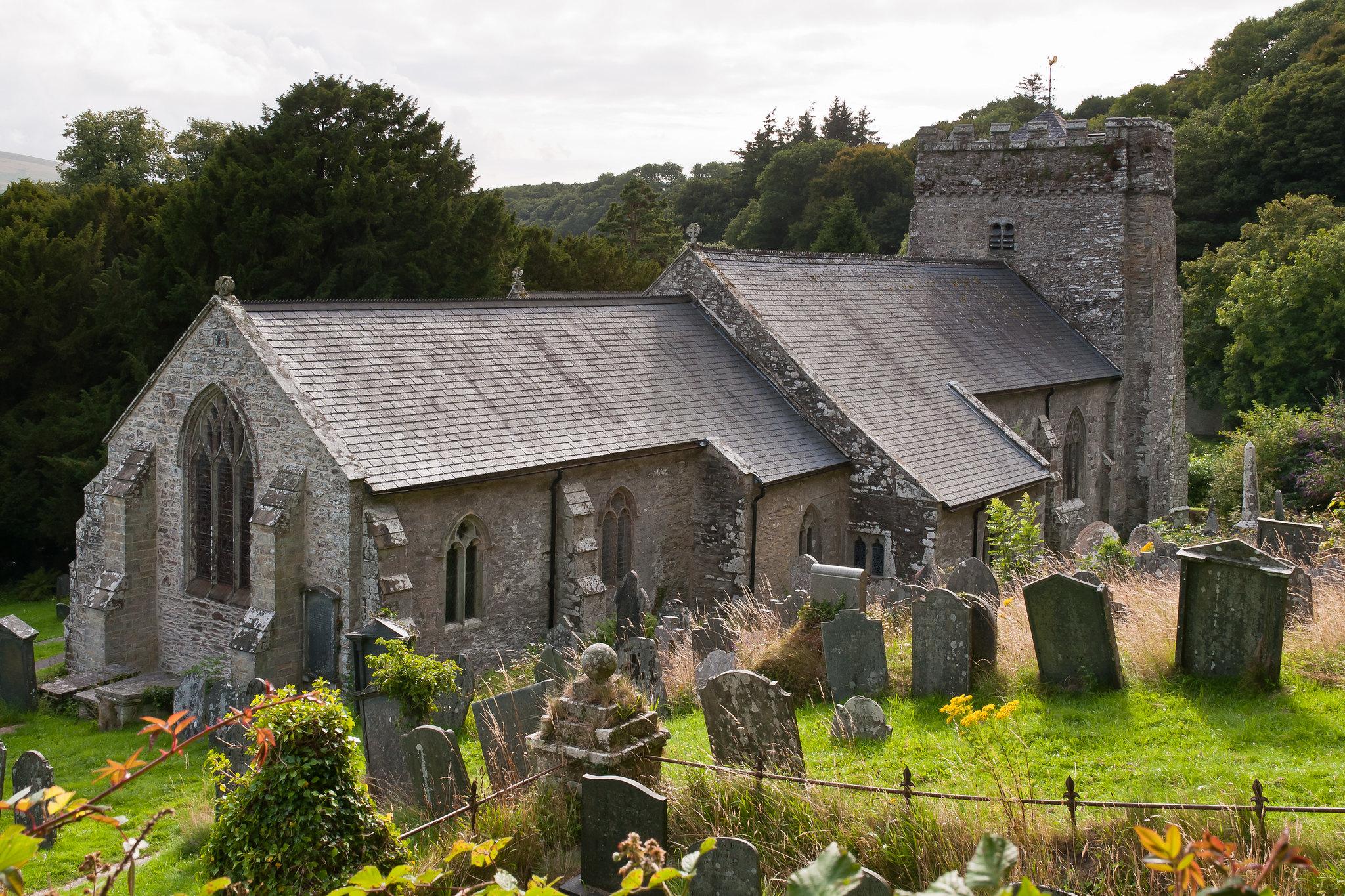St Andrew the Apostle
Bayvil, Pembrokeshire
Thought to be an early 19th century rebuilding of a medieval church although no perceptible early fabric remains.

Don’t stop at the bleeding yew, go into the church and experience the peace and tranquillity.
Nevern, Pembrokeshire
Nevern is on the little River Nyfer, which winds to the north of the Presceli Hills. These hills have been inhabited for thousands of years, as the prehistoric Pentre Ifan burial chamber, or dolmen, proves. St Brynach is only a mile or two south of Nevern and has spectacular views across the hills to Cardigan Bay.
Nevern's church and churchyard contain more chapters on the history of man in this area, although from a much later time. The earliest are stones with Ogham and Latin inscriptions on them; they date from the 5th or 6th century, around the time that Irish St Brynach came here and founded the church.
One of the stones is now used as a sill in the church. Close to it is another stone, also used as a sill, this time from the 10th century, with an intricate Celtic cross carved on it. There is another Ogham and Latin inscribed stone in the churchyard, near to the church's chief treasure, the Nevern Cross. This dates from the late 10th or early 11th century and is one of the finest Celtic crosses in Wales. It is covered in intricate interlacing patterns, all beautifully preserved and nearly as clear as when the cross was carved. The stone from which it is made came from the Presceli's Hills.
The church as it stands today has a Norman tower and Tudor nave, but it was rigorously restored in 1864.
Legends abound here: one of the yew trees is called the Bleeding Yew, and has dark blood like sap that oozes year round. And the first cuckoo of Spring is supposed to sing from Nevern Cross on 7 April, St Brynach's Day.
Bayvil, Pembrokeshire
Thought to be an early 19th century rebuilding of a medieval church although no perceptible early fabric remains.
Newport, Pembrokeshire
A church visited three times by John Wesley.
St Dogmaels, Pembrokeshire
The remains of the Abbey of St Mary lie in the centre of St Dogmaels immediately south of the parish church, which itself lies to the south of the High Street.